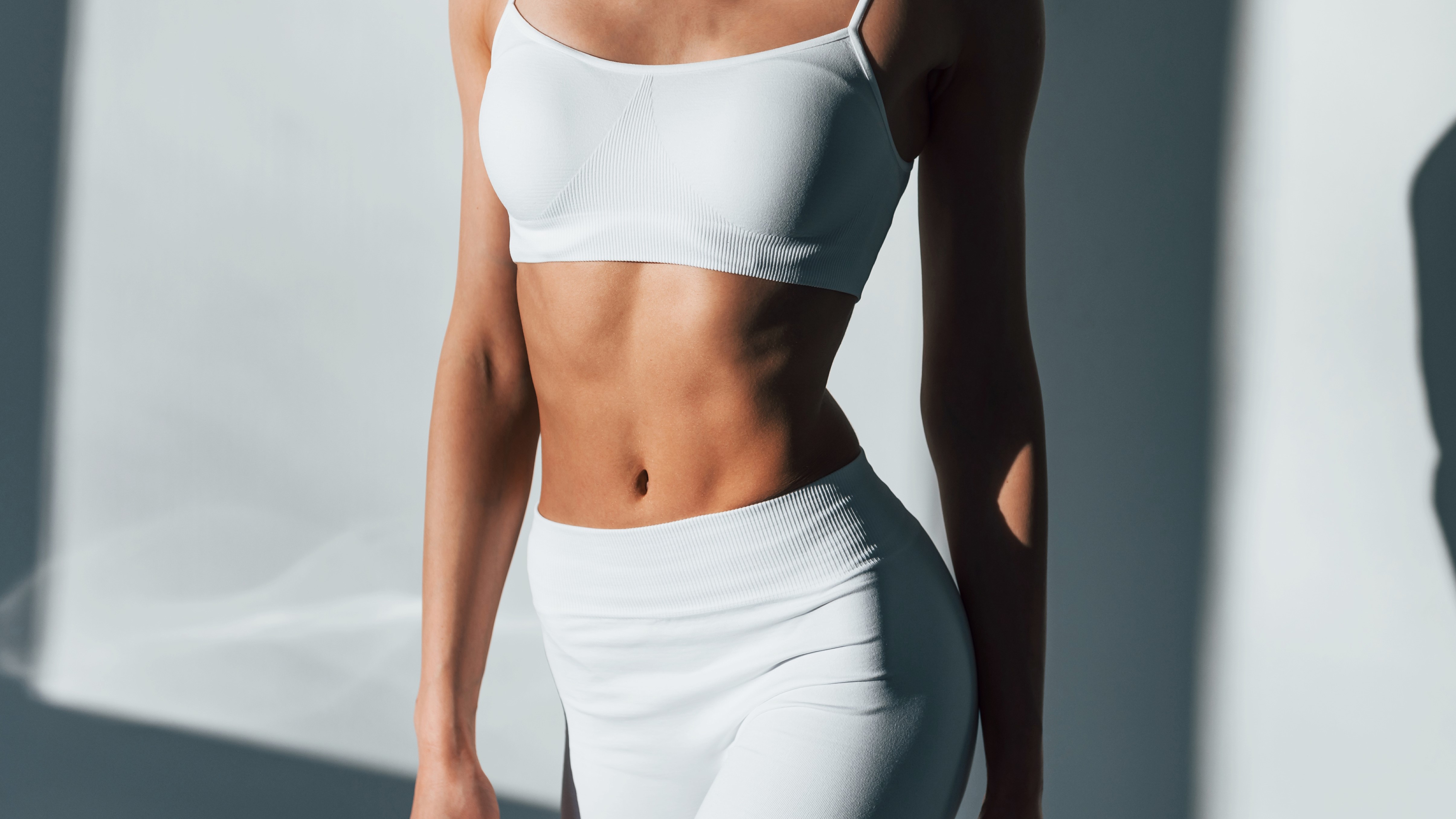Forget crunches — this neck-friendly ab workout sculpts your core in 7 exercises
Here’s how to do it

If you finish most of your ab workouts with your neck aching as much as your mid-section, this workout is one to try. Often, neck pain during your ab workouts, especially exercises like sit-ups and crunches, is a sign you haven’t quite got your form right, and that your abs aren’t working as hard as they should be. If you want to work on your abdominal strength without putting any extra strain on your neck, this neck-friendly ab workout sculpts your core in just seven exercises.
As a reminder, your neck should never be straining during any abdominal exercises. It’s a common form mistake during a lot of ab exercises, including Russian twists and V-ups, but you should always be flexing and engaging your core muscles, not your neck. If you do find your neck strains, you can always place your hands gently behind your neck to take some of the stress off, but be sure to keep your head neutral. You shouldn’t be pulling or twisting your neck; think of your hands as gently cradling your head.
If you’re new to exercise, or you’re returning to exercise following an injury, or a pregnancy, it’s always a good idea to check with a health professional before adding new workouts to your routine.
What is the workout?
Ready to get started? The workout, created by fitness trainer Katie Pierce, involves seven different exercises, each of which you’ll do for 45 seconds, followed by a 15-second rest between each exercise. You can repeat the circuit twice for an ab workout that takes less than 15 minutes. The workout is a Pilates-based workout that only uses your body weight, so you can put your best adjustable dumbbells and best kettlebells to one side. (You'll still want one of the best yoga mats, though.)
A post shared by Katie Pierce (@katiepierce_fit)
A photo posted by on
Dead bugs
To do a dead bug, start by lying on your back with arms straight above you, and your knees in a tabletop position. Slowly lower your right arm to a couple of inches off the floor behind your head; as you do so, stretch your left leg away from your body and lower that to just above the floor. Pause, then return to your starting position and repeat on the opposite side. Make sure you keep your lower back pressed into the mat for the entire exercise — to do this, think about sucking your belly button into your spine. Here’s more on what happened when our fitness editor did 100 dead bugs a day for a week.
Double reach
Similar to a dead bug, start by lying on your back with your arms and legs in a tabletop position. Engage your core, thinking about sucking your belly button into your spine, and slowly extend both your arms and legs away from your body, straightening both. Pause when both arms and legs are extended and hovering off the floor, before bringing them back in towards your body.
Single leg lift
For this exercise, start lying on your back, with your lower back, head, and neck pressed into the floor. Keep your arms by the side pressed into your exercise mat. Hover your legs a few inches off the floor, and then, keeping your leg straight and your foot pointed, raise your leg up towards the ceiling, as high as you can while keeping your leg straight, then lower it back to your starting position and repeat on the opposite side.
Sign up to get the BEST of Tom's Guide direct to your inbox.
Get instant access to breaking news, the hottest reviews, great deals and helpful tips.
Reverse crunch
To do a reverse crunch, start by lying on your back, with your lower back, head, and neck pressed into the floor. Bend your legs at the knee, pressing your feet into the mat, and engage your core, thinking about sucking your belly button into your spine. Keeping your knees bent, inhale, and raise your legs, hips, and bottom off the mat. Pause at the top of the movement, using your core to keep your hips raised off the mat. Your head and neck should stay imprinted on the mat. As you exhale, lower your hips back to the mat. That’s one rep. Here’s more on how to do a reverse crunch with the correct form.
Side tilt to extension
For this exercise, start with both legs in tabletop position and your arms pressed into your mat, pressed out to your sides. Keeping your lower back pressed into the mat, bend both knees and, keeping them together, rotate them out to one side, as far as you can go without your back lifting from the mat, then extend both legs out away from your body. Reverse the movement, and then repeat on the opposite side. Keep switching sides.
Single-leg stretch variation
For this exercise, start with your arms and legs in a tabletop position, keeping your arms still, and perform bicycle crunches with your legs, extending one and then the other out and away from your body. Ensure your lower back stays pressed into the mat throughout this exercise.
Straight leg single-leg stretch variation
For this exercise, perform the same exercise as above, but for this version bring one leg up towards the ceiling, while the other leg is extended out and away from your body, then switch in a scissor motion. Keep your arms still and extended away from your chest throughout.
What are the benefits?
As with all ab workouts, these exercises won’t transform your core overnight. If visible abs are your goal, you’ll need to focus on your overall body fat percentage, and ensuring you are eating well, and mixing your strength sessions with cardio. That said, building a strong core is far more than just an aesthetic goal — it can help you run faster, lift heavier weights, sit with better posture, and protect your lower back from injury.
Pilates has a number of benefits when it comes to working on your core strength. Research has found that regular Pilates practice can help improve your flexibility, increase the muscle strength and tone of your abdominal muscles, improve posture, decrease lower back pain, and reduce your risk of injury. If you’re looking for more inspiration, here are 9 of the best Pilates exercises for targeting your core.
More from Tom's Guide

Jane McGuire is Tom's Guide's Fitness editor, which means she looks after everything fitness related - from running gear to yoga mats. An avid runner, Jane has tested and reviewed fitness products for the past five years, so knows what to look for when finding a good running watch or a pair of shorts with pockets big enough for your smartphone. When she's not pounding the pavements, you'll find Jane striding round the Surrey Hills, taking far too many photos of her puppy.
